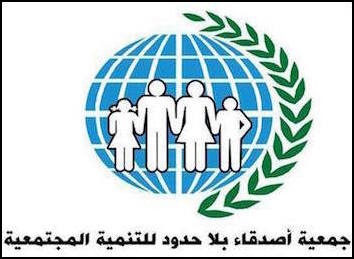Meanwhile, under the Obama administration, the definition and conditions by which a person was classified a terrorist has been amended and the term ‘enemy combatant’ was never used by anyone during the Obama years.
It is accurate to say the genesis of using armed drones began under GW Bush, yet Obama made a fine art of the killing drone operations. The excuse was always, the first choice is to capture and interrogate, when that is not possible then a killing strike by drone is authorized. Exactly who did if any were captured and interrogated other than just one known as Ahmed Abu Khatallah, of Benghazi fame? None.
Meanwhile, Obama’s armed drone operation has killed innocents in high numbers, a scandal largely ignored by the White House and the media.
The Bureau of Investigative Journalism: There were ten times more air strikes in the covert war on terror during President Barack Obama’s presidency than under his predecessor, George W. Bush.
Obama embraced the US drone programme, overseeing more strikes in his first year than Bush carried out during his entire presidency. A total of 563 strikes, largely by drones, targeted Pakistan, Somalia and Yemen during Obama’s two terms, compared to 57 strikes under Bush. At least 384 civilians were killed.
The use of drones aligned with Obama’s ambition to keep up the war against al Qaeda while extricating the US military from intractable, costly ground wars in the Middle East and Asia. But the targeted killing programme has drawn much criticism.
The Obama administration has insisted that drone strikes are so “exceptionally surgical and precise” that they pluck off terror suspects while not putting “innocent men, women and children in danger”. This claim has been contested by numerous human rights group. The Bureau’s figures on civilian casualties also demonstrates that this is often not the case.
The White House released long-awaited figures in July on the number of people killed in drone strikes between January 2009 and the end of 2015, which insiders said was a direct response to pressure from the Bureau and other organisations that collect data. However the US’s estimate of the number of civilians killed – between 64 and 116 – contrasted strongly with the number recorded by the Bureau, which at 380 to 801 was six times higher.
That figure does not include deaths in active battlefields including Afghanistan – where US air attacks have shot up since Obama withdrew the majority of his troops at the end of 2014. The country has since come under frequent US bombardment, in an unreported war that saw 1,337 weapons dropped last year alone – a 40% rise on 2015.
Afghan civilian casualties have been high, with the United Nations (UN) reporting at least 85 deaths in 2016. The Bureau recorded 65 to 105 civilian deaths during this period.
Pakistan was the hub of drone operations during Obama’s first term. The pace of attacks had accelerated in the second half of 2008 at the end of Bush’s term, after four years pocked by occasional strikes. However in the year after taking office, Obama ordered more drone strikes than Bush did during his entire presidency. The 54 strikes in 2009 all took place in Pakistan.
Strikes in the country peaked in 2010, with 128 CIA drone attacks and at least 89 civilians killed, at the same time US troop numbers surged in Afghanistan. Pakistan strikes have since fallen with just three conducted in the country last year.
Obama also began an air campaign targeting Yemen. His first strike was a catastrophe: commanders thought they were targeting al Qaeda but instead hit a tribe with cluster munitions, killing 55 people. Twenty-one were children – 10 of them under five. Twelve were women, five of them pregnant
Through 2010 and the first half of 2011 US strikes in Yemen continued sporadically. The air campaign then began in earnest, with the US using its drones and jets to help Yemeni ground forces oust al Qaeda forces who had taken advantage of the country’s Arab Spring to seize a swath of territory in the south of the country.
In Somalia, US Special Operations Forces and gunships had been fighting al Qaeda and its al Shabaab allies since January 2007. The US sent drones to Djibouti in 2010 to support American operations in Yemen, but did not start striking in Somalia in 2011.
The number of civilian casualties increased alongside the rise in strikes. However reported civilian casualties began to fall as Obama’s first term progressed, both in real terms and as a rate of civilians reported killed per strike.
In Yemen, where there has been a minimum of 65 civilian deaths since 2002, the Bureau recorded no instances of civilian casualties last year. There were three non-combatants reportedly killed in 2016 in Somalia, where the US Air Force has been given broader authority to target al Shabaab – in previous years there were no confirmed civilian deaths.
Strikes in Yemen, Pakistan and Somalia have always been dwarfed by the frequency of air attacks on battlefields such as Afghanistan.
December 2014 saw the end of Nato combat operations there, and the frequency of air attacks plummeted in 2015. Strikes are now increasing again, with a 40% rise in 2016, though numbers remain below the 2011 peak.
The number of countries being simultaneously bombed by the US increased to seven last year as a new front opened up in the fight against Islamic State (IS). The US has been leading a coalition of countries in the fight against IS in Iraq and Syria since August 2014, conducting a total of 13,501 strikes across both countries, according to monitoring group Airwars.
In August US warplanes started hitting the group hard in Libya. The US declared 495 strikes in the country between August 1 and December 5 as part of efforts to stop IS gaining more ground, Airwars data shows.
In the final days of Obama’s time in the White House, the Bureau has broken down his covert war on terror in numbers. Our annual 2016 report provides figures on the number of US strikes and related casualties last year, as well as collating the total across Obama’s eight years in power:
***
Total US drone and air strikes in 2016
|
|
Pakistan |
Yemen |
Somalia |
Afghanistan |
| Strikes |
3 |
38 |
14 |
1071 |
| Total people reported killed |
11-12 |
147-203 |
204-292 |
1389-1597 |
| Civilians reported killed |
1 |
0 |
3-5 |
65-105 |
Notes on the data: The Bureau is not logging strikes in active battlefields except Afghanistan; strikes in Syria, Iraq and Libya are not included in this data. To see data for those countries, visit Airwars.org.
Somalia
Somalia: confirmed US strikes
|
|
December 2016 |
2016 |
2009 to 2016 |
| US strikes |
0 |
14 |
32-39 |
| Total people reported killed |
0 |
204-292 |
242-454 |
| Civilians reported killed |
0 |
3-5 |
3-12 |
| Children reported killed |
0 |
0 |
0-2 |
| Total people reported injured |
0 |
3-16 |
5-26 |
Notes on the data: in the final column, strikes carried out between Jan 1 and Jan 19 2009 are not included. The figure refers to the number of strikes that took place from Jan 20, 2009, onwards – the data Obama’s presidency began. This applies to all the tables in this report.
The US officially designated Somali militant group al Shabaab as an al Qaeda affiliate at the end of November amid a rising number of US strikes in the country last year.
One week after the September 11, 2001 terrorist attacks, Congress passed the Authorisation for Use of Military Force law allowing the president to go after those responsible and “associated forces”.
The US has used this law, which predates the formation of al Shabaab, to target individual members of the group deemed to have al Qaeda links. The military has also hit the group in defence of partner forces. The group is now deemed an “associated force”, meaning all members are legitimate terrorist targets.
The US has been aggressively pursuing al Shabaab. At least 204 people were killed in US strikes in Somalia last year – ten times higher than the number recorded for any other year. The vast majority of those killed were reported as belonging to al Shabaab.
An attack on an al Shabaab training camp in the Hiran region on March 5 accounts for 150 of these deaths. This is the highest death toll from a single US strike ever recorded by the Bureau, overtaking the previous highest of 81 people killed in Pakistan in 2006.
One of the more controversial of last year’s strikes occurred on September 28. Somali forces were disrupting a bomb-making network when they came under attack from a group of al Shabaab fighters. The US launched an air strike to “neutralize the threat”.
Local officials said 22 local soldiers and civilians were killed. In the city of Galkayo, where the strike took place, citizens protested in the streets.
US Africa Command told the Bureau the reports of non-combatant deaths were wrong. However the US Secretary of Defense Ash Carter announced the next day that the Pentagon would investigate the strike. The investigation found the strike had not killed members of al Shabaab. It instead killed ten members of a local militia reportedly allied with the Americans, US Africa Command concluded.
Afghanistan
Afghanistan: Bureau data on US drone strikes and other airstrikes
|
|
December 2016 |
2016 |
2015 to 2016 |
| US strikes |
8 |
1071 |
1306-1307 |
| Total people reported killed |
24-26 |
1389-1597 |
2371-3031 |
| Civilians reported killed |
0 |
65-105 |
125-182 |
| Children reported killed |
0 |
3-7 |
6-23 |
| Total people reported injured |
12 |
196-243 |
338-390 |
Notes on the data: The US Air Force has a variety of aircraft carrying out missions over Afghanistan, including jets, drones and AC-130 gunships. The UN reported in August 2015 that most US strikes were by unmanned aerial vehicles. This matches the Bureau’s records that show most US air attacks since January were by drones. However in the absence of US authorities revealing which type of aircraft carried out which attack, it remains unclear which of the attacks recorded were by manned or unmanned aircraft.
The Bureau’s data on strikes in Afghanistan is not exhaustive. The ongoing war creates barriers to reporting and the Bureau’s data is an accumulation of what publicly available information exists on specific strikes and casualties. The US government publishes monthly aggregates of air operations in Afghanistan, minus information on casualties.
US Air Force data: Afghanistan in 2016
|
| Total Close Air Support (CAS) sorties with at least one weapon release |
615 |
| Total CAS sorties |
5162 |
| Total weapons released |
1337 |
US warplanes dropped 1,337 weapons over the country last year, a 40% rise on 2015, according to data released by the US Air Force.
The increase follows President Barack Obama’s decision in June to give US commanders more leeway to target the Taliban, amid the Afghan army’s struggle to keep strategic cities from falling into the insurgents’ hands.
Strikes conducted under this authority, referred to by the military as “strategic effects” strikes, have increased in frequency since the new rules came into force.
The continuing rise in attacks against the Taliban demonstrates the battle against the insurgents is far from over, despite combat operations targeting the group officially ending almost two years ago. Since then, Taliban violence has increased and Afghanistan’s branch of Islamic State has been trying to carve out territory in the east of the country.
IS emerged in Afghanistan in late 2014, growing as a force through 2015. The US responded by allowing the military to specifically target the group in a bid to stop it gaining strength.
As strikes have risen, so have reports of civilian casualties, with some significant incidents taking place in the second half of 2016.
The UN’s biannual report on civilian casualties released in July detailed the deaths of 38 civilians in US strikes. Since then, the UN has highlighted two US strikes that took the lives of a further 47 civilians.
One of the more controversial strikes hit a house in Nangarhar province on September 28. While the US has maintained that members of Islamic State were killed in the attack, the UN, with uncharacteristic speed, released a report saying the victims were civilians. In subsequent reporting, the Bureau was able to confirm this and identify the victims.
This particular strike caused a rift between the UN and US. In an unusual step, the US commander in charge of the Afghanistan operations General Nicholson reportedly considered banning or restricting UN access to a military base in Kabul as a result of its assertion.
There could be more civilian casualties than the two incidents highlighted. These may be documented in the UN’s annual report due for release in February. The Bureau recorded the deaths of up to 105 civilians in Afghanistan as a result of US strikes in 2016.
Not included in these figures were instances of “friendly fire” attacks. The Bureau published an investigation into one of the three such incidents in 2016 when a US strike on a Taliban prison killed Afghan police officers being held captive.
Yemen
Yemen: confirmed US strikes
|
|
December 2016 |
2016 |
2009 to 2016 |
| US strikes |
1 |
38 |
158-178 |
| Total people reported killed |
2 |
147-203 |
777-1075 |
| Civilians reported killed |
0 |
0 |
124-161 |
| Children reported killed |
0 |
0 |
32-34 |
| Total people reported injured |
0 |
34-41 |
143-287 |
Last year American air operations in Yemen reached their second highest level since 2002, when the US conducted its first ever lethal drone strike in the country.
At least 38 US strikes hit the country in 2016, targeting operatives belonging to terrorist group al Qaeda in the Arabian Peninsula (AQAP) amid Yemen’s civil war.
The conflict ignited when the Houthi militant group stormed the capital of Sanaa in September 2014. Allied to former president Ali Abdullah Saleh, the rebels pushed the internationally-recognised government of Abed Rabbo Mansour Hadi into exile.
On October 12, the military launched cruise missile strikes at three rebel targets in Houthi-controlled territory following failed missile attacks on a US Navy ship. This is the first and only time the US has directly targeted Houthi rebels in Yemen.
Last year, a Saudi-led coalition began airstrikes against the rebels, which has led to widescale destruction. One of these strikes hit a funeral ceremony, killing 140 people. The munition used was identified by Human Rights Watch as a US-manufactured air-dropped GBU-12 Paveway II laser-guided bomb.
The Obama administration faced pressure to put an end to arms sales to Saudi Arabia following the strike, leading to a December decision to block the transfer of precision munitions.
The UK is facing pressure to do the same – in June the High Court granted a judicial review of the government’s arms exports to Saudi Arabia following a case brought by London-based organisation Campaign Against Arms Trade.
Pakistan
Pakistan: confirmed US strikes
|
|
December 2016 |
2016 |
2009 to 2016 |
| US strikes |
0 |
3 |
373 |
| Total people reported killed |
0 |
11 |
2089-3406 |
| Civilians reported killed |
0 |
1 |
257-634 |
| Children reported killed |
0 |
0 |
66-78 |
| Total people reported injured |
0 |
3-6 |
986-1467 |
Drone strikes in Pakistan last year fell to their lowest level in a decade, with only three strikes conducted in the country.
The most recent attack targeted Mullah Akhtar Mansour, the leader of the Afghan Taliban. Mansour was killed on May 21 while being driven through Balochistan, a restive region home to a separatist movement as well as the Afghan Taliban’s leadership. His civilian taxi driver, Mohammed Azam, was also killed in the strike.
It was the first ever US strike to hit Balochistan and only the sixth to hit a location outside Pakistan’s Federally Administered Tribal Areas. It was also the first to be carried out by the US military in Pakistan. The CIA has carried out strikes since the drone program began in Pakistan in 2004.
The Pakistan government summoned the US ambassador in protest following the strike. Sartaj Aziz, foreign affairs special adviser to Pakistani Prime Minister, also claimed that killing Mansour had dented efforts to bring the Taliban to the negotiating table.
US drone strikes in Pakistan peaked in 2010, during which at least 755 people were killed. It is unclear what has led to the steep drop in strikes since then. The Pakistani military conducted an 18-month ground offensive in the tribal regions flushing out many militants and pushing them into Afghanistan. It is possible that the US ran out of targets.
This does not mean that the drone programme in Pakistan has come to end. Strikes paused for a six-month period at the end of December 2013 while the Pakistani government unsuccessfully tried to negotiate a peace accord with the Taliban. It is possible attacks will resume with the change in presidency in January.


 The Gaza-based Unlimited Friends Association for Social Development (UFA) is close to the Palestinian Hamas movement.
The Gaza-based Unlimited Friends Association for Social Development (UFA) is close to the Palestinian Hamas movement.
 UFA
UFA  The Trump administration should take a close look at these and other charities.
The Trump administration should take a close look at these and other charities.

